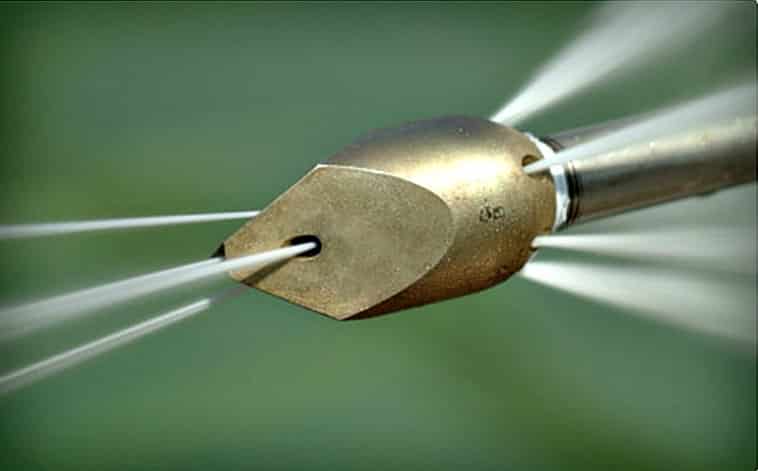Why hydro jetting is effective
Those who keep up with advancements in the plumbing industry know that the only way to clear a storm water line is by using a hydro jetter.

When you hear someone say, “I’ve got a blocked drain”, this is usually followed up with a statement like “I need a plumber to come out with his electrical eel or metal snake machine to unblock my drain.”
However, when it comes to stormwater drain lines, it’s a whole different kettle of fish. The conventional methods of clearing a sewer drain line may still be done by various plumbing firms, but those who keep up with the latest trends and technology in the plumbing industry know that the only way to clear a customer’s stormwater line is by using a Hydro Jetter.
As you will see in the video below, there are various reasons why the electric eel or metal snake drain cleaning machine does not cut the mustard when trying to unblock a stormwater line.
Why you should opt for hydrojetting instead of metal snake drain cleaning
1. The fittings most commonly used when installing stormwater lines (as well as their throat) usually have very tight radius. This means that the rigid metal cable used on the traditional electric eel cannot go through these fittings without causing catastrophic damage.
2. The kind of pipe most commonly installed for stormwater systems has thin walls, so the aggressive nature of the metal snake drain cleaning machine can easily penetrate the walls of this pipe, leaving unnecessary damage to the drain lines.
3. The electric eel has approximately 23m of usable cable on the machine before either another location needs to be found to enter the drain or another roll of cable is introduced. But with a Hydro Jetter, you can get a minimum of 55m of hose into the drain. Moreover, depending on the setup, some Jetters are actually equipped with 120m of hose, giving you well over 100m of usable high-pressure hose before relocating or finding another point in which to access the drain lines.
Other benefits of hydrojetting
The hydrojetting machine can be used with various sizes of hose, allowing it to get into some of the smallest and tightest stormwater fittings and to push out any sediment or tree leaves. The flexibility of this hose when under a huge operating pressure of 4000 PSI and also when not pressurised allows it to get into places that no other form of machinery can enter. The benefit of this method is that the jetting heads are self-propelled, and they can guide their way in and around the many different directions in which a stormwater system may have been installed.
When it comes to domestic stormwater installations, a 90mm pipe and fittings in stormwater grade material is the most common product used in today’s market. However, that is not to say that in some domestic installations, a customer wouldn’t increase the specification on their design to have the stormwater lines installed in sewer-grade pipe and fittings.
Although this rarely happens, it has been done in the past and has produced good benefits. The pipe is much more ridged, the fittings are larger, and the available surface area in which the glue has to make its chemical reaction with the fittings is larger, allowing for greater strength of the chemical bond and greater resistance to penetration from tree roots and breakage through ground movement.
Now, given that a lot of stormwater lines usually hold water (wet system/mozzie breeder), a build-up of silt gathers at the base of the drain line. When the electric eel passes through the line, it twists and turns through the pipe, moving around the actual sediment build-up but not actually as effective as a hydro jetting. This forces huge amounts of water along the line, thoroughly descaling the pipe system.
In order to keep your stormwater drainage system flowing during winter, make sure you get your stormwater pipes and hydro jet cleaned. It’s best to keep the likelihood of needing major repairs slim. If you leave the problem for years, it’s inevitable that one day a section of the stormwater drain will have to be replaced — hopefully, it’s not under a driveway or a paved path.
About the author Aaron Stewart
 Aaron Stewart is the Owner-Operator of Mayfair Plumbing & Gasfitting. He has over 20 years of experience in all aspects of plumbing and gasfitting, and he also works with a team of licensed plumbers, gasfitters, electricians, consultants, and draftsmen to provide superior services for Australian homes and businesses.
Aaron Stewart is the Owner-Operator of Mayfair Plumbing & Gasfitting. He has over 20 years of experience in all aspects of plumbing and gasfitting, and he also works with a team of licensed plumbers, gasfitters, electricians, consultants, and draftsmen to provide superior services for Australian homes and businesses.